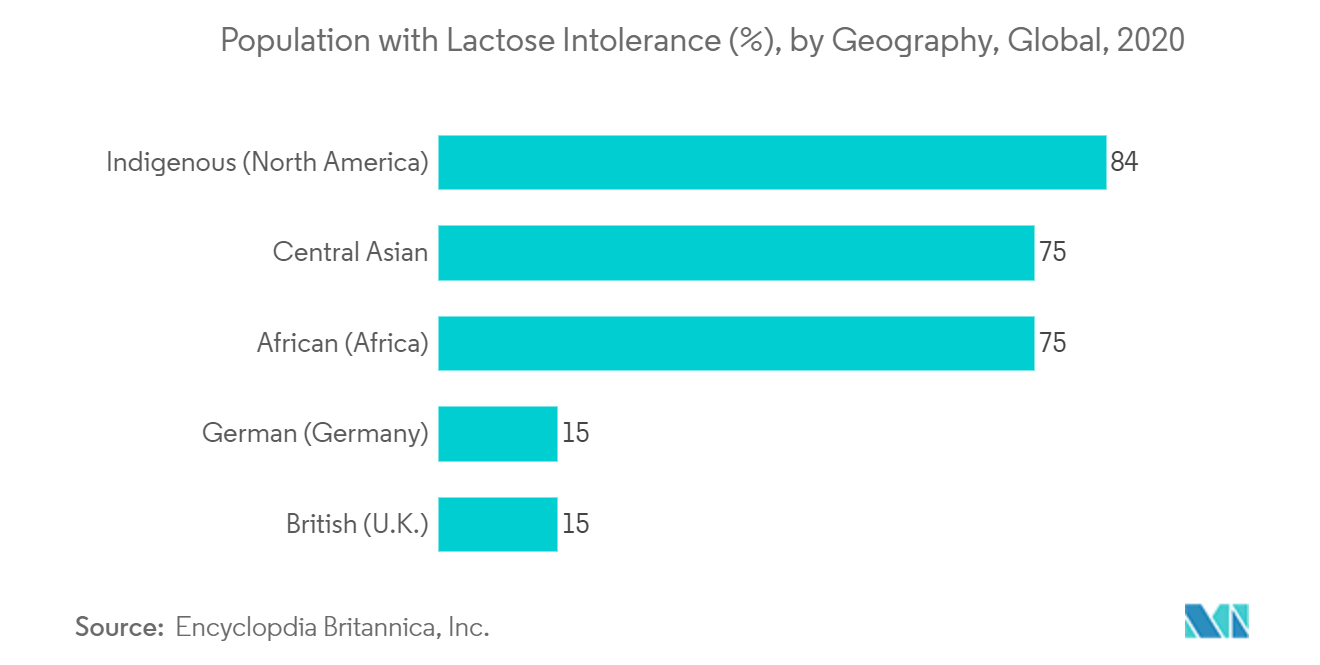Market Trends of Soy-based Food Industry
This section covers the major market trends shaping the Soy-Based Food Market according to our research experts:
Rising Prevalence of Lactose Intolerant Population
Allergies and intolerances are the major reasons for going dairy-free, especially considering the food allergy initiative's statistic stating that cow milk allergy is the leading food allergy in infants and children. Soy-based dairy alternatives are naturally lactose-free, and they are generally considered to be lower in cholesterol and fat than milk from animals. Moreover, they usually offer a similar protein, mineral, and vitamin content. Further, a relative amount of lactose content in cottage cheese (4.62g/125ml), cream cheese (1.60g/50g), and yogurt (3.25g/125 ml), among others, results in the malabsorption of nutrients among the lactase-deficient demographics, paying the way for innovative soy-based, lactose-free portfolios, driving the market demand. Additionally, the market studied is gaining popularity, mainly in urban areas, where people are spending on premium products that have essential macronutrients and amino acids, good quality fatty acid profiles, vital minerals, vitamins, complex carbohydrates, and many phytochemicals. In addition to the excellent nutritional value of soy, scientists have found that consumption of soy-associated products can contribute to reducing the risk of heart disease. Hence, a considerable percentage of the population is shifting toward soy-based food and beverages. Taking up the trend, the manufacturers are systematically fortifying micronutrients into the products, which is booting the market.

Asia-Pacific Accounting for the Largest Share
Asia-Pacific region is witnessing a growing trend of veganism led by young people, especially teens and millennials, who seem to be more invested in defending and spreading awareness about this trend. Asian consumers are now more open to the idea of plant-based meat products, contributing to a healthy lifestyle. Plant-based meat substitutes are slowly carving out a place for themselves among a new generation of consumers increasingly alarmed by outbreaks of diseases, such as Coronavirus and African swine fever. In addition, food companies are partnering to expand artificial meat to cater to consumer demand for plant-based meat and broaden their consumer bases. For instance, in May 2021, Starzen, a meat integrated company, together with health food and drink manufacturer Otsuka, developed a brand called 'ZEROMEAT' and is selling plant-based sausages, meatballs, and hamburg steak patties made from soy protein and egg whites. In addition to the food manufacturers, the retail and foodservice chains are also the main drivers of this soy-meat trend. In 2020, almost all convenience store chains, including Lawson, Seven Eleven, Family Mart, as well as several food services and cafe chains, released soy-based products


